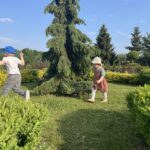It was only in April that we suggested Latvia was currently the hottest property in the Baltic states, highlighting the rapid development of its tech and start-up ecosystem, which has hitherto been somewhat in the shadows of its Baltic neighbours, Lithuania and—especially—Estonia.
Then, earlier this month, the country climbed to an all-time high of second place (albeit behind Estonia) in Emerging Europe’s IT Competitiveness Index, part of the Future of IT 2024 report.
This week, there was further confirmation of the country’s upward trajectory and of its ongoing efforts to become the preeminent Baltic investment destination with news that the Investment and Development Agency of Latvia (LIAA) has displaced Invest Estonia as the leading national investment promotion agency (IPA) in Central and Eastern Europe and the Baltics, ending four years of uninterrupted Estonian success.
In the latest edition of Emerging Europe’s Investment Promotion Report, which since 2018 has taken an in-depth look at how the region’s 23 IPAs communicate their investment opportunities and how they use their digital channels to get potential investors interested in the various business opportunities offered by the region’s key sectors, LIAA, third in 2023 behind Estonia and Lithuania, leapfrogged both of its Baltic neighbours to claim top spot.
Slovenia is fourth (up from seventh in 2023), with Czechia again in fifth. At the other end of the index are Albania, Montenegro, and Azerbaijan. Both Montenegro and Azerbaijan did see some improvement in their overall scores, however.
Latvia outperformed all of its competitors in two of the five categories that contribute to an IPA’s overal score: ‘Validity of information’ and ‘Support and community building’. The country’s IPA provides extensive information about the Latvian economy in general, as well as offering key information about the main sectors for investment and existing incentives for investment.
Estonia is the leader in the ‘Innovativeness and creativity’ category while Lithuania ranks first in ‘Online presence and ease of use’. Ukraine’s IPA, perhaps unsurprisingly, came out on top in ‘Response to current events’.
Latvia’s moment
Foreign Direct Investment (FDI) in Latvia reached 1.5 billion euros in 2023 according to the International Monetary Fund (IMF), a big increase on the 1.16 billion euros of 2022, with almost 90 per cent coming from other EU countries. Sweden is the largest single investor in Latvia, accounting for nearly a third of all inward investment.
Key sectors include professional and technical services, finance and insurance, real estate, and manufacturing.
“LIAA has been ranked quite high in the Investment Promotion Report for quite some time and in 2023 we made the podium alongside the Estonian and Lithuanian agencies. This shows how strong we are here in the Baltics in creating and promoting our value proposition,” says Raivis Bremsmits, director general of the Investment and Development Agency of Latvia.
“This year’s first place proves how committed we are here in Latvia to showcase our country to the global business community. LIAA follows classic FDI targets but also goes beyond CapEx and workplaces.
“While traditionally focused on brownfield and greenfield projects, we assist strategic mergers and acquisitions- and startup investments to attract new capital and expertise. For years, we’ve supported strategic partnerships with our startup community to achieve these goals.”
Bremsmits also says that Latvia is expanding its global sales network, with LIAA operating 22 foreign offices—the largest network in the Baltics.
“We collaborate closely with the Ministry of Foreign Affairs and embassies to strengthen our services to existing and new investors.
“Thinking beyond traditional IPA roles is crucial. Investors benefit from a highly efficient local supply chain, impactful research and development, and easy access to export markets. That’s why our team includes investment advisors, as well as export, technology, and start-up experts, to turn these synergies into reality.”
Nation branding
This year, aside from ranking the performance of each country, Emerging Europe partnered with Brand Finance to look at national brands and their value.
There is—naturally—a strong relationship between the perceived attractiveness of a country as an investment destination and FDI inflows.
Brand Finance data shows that 31 per cent of the variance in FDI inflows across emerging Europe can be explained by the willingness to recommend each of the 22 nations (Kosovo is not included in its research) as destinations to invest in.
“Poland leads as a significant outlier with a high recommendation score and substantial FDI inflows, accounting for over a third of the total for the region, but the scale of its lead over the rest of the pack points to other factors having a stake in its success, from its economic clout to its diplomatic influence,” says Konrad Jagodzinski, place branding director, Brand Finance.
“Croatia has the second-highest recommendation score in the region but lower FDI inflows compared to its peers. This can be linked to its strong tourism sector, which enhances its nation brand but may deter investment in other sectors,” he adds.
“Ukraine meanwhile scores lowest for recommendation to invest in, unsurprisingly so given the ongoing Russian aggression. At the same time, it still commands relatively high levels of FDI inflows compared to its peers, demonstrating that negative perceptions can be challenged through a targeted strategy.
“This shows that while the perceived investment climate is relevant, other factors significantly influence FDI inflows. There are more objective factors at play—such as policies and infrastructure. However, there are also other aspects of the nation brand—which can be easily overlooked by investment promotion agencies as falling beyond their traditional remit—that also play vital roles.
“Therefore, looking at a nation brand as a whole rather than at investment attractiveness alone, and understanding its soft power—perceived influence rather than only reputation, can really set a country apart from competitors and yield improved results.
“Understanding the relationship between perceived investment attractiveness, the ability to leverage those perceptions to bring investors across the line, and finally the tangible results in terms of FDI inflows, is the foundation on which investment attraction agencies can chart impactful strategies.”
Copies of the full Emerging Europe Investment Promotion Report 2024 can be downloaded here.







